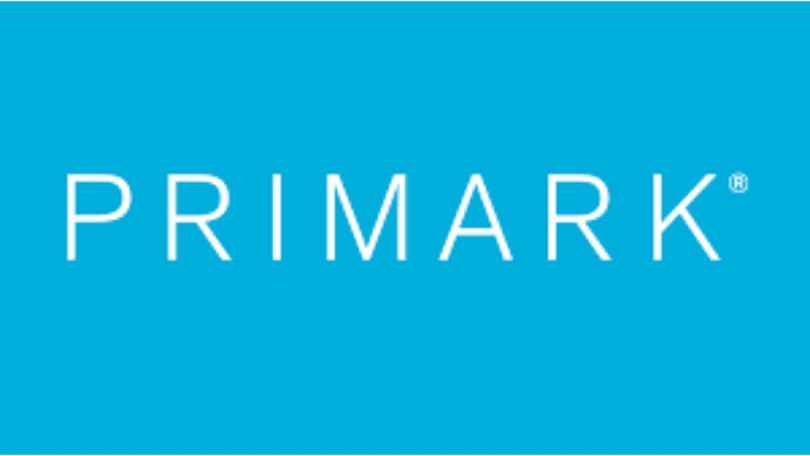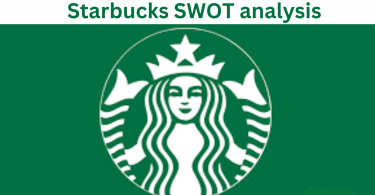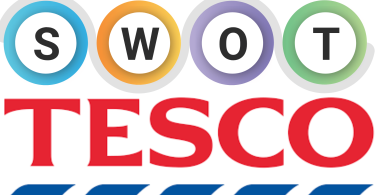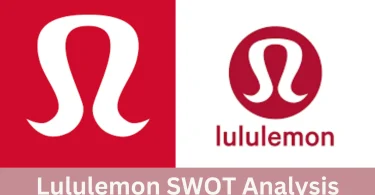In the competitive retail world, Primark stands as a formidable force. Yet, even giants must constantly adapt to thrive. Enter SWOT analysis—a potent tool enabling Primark’s leadership to gauge their internal strengths and weaknesses with surgical precision.
But its significance extends beyond introspection. SWOT unveils the vistas of external opportunities and guards against lurking threats, empowering decisions that steer Primark’s course toward enduring success.
Primark overview
Primark, a renowned clothing retailer, has carved its niche with affordable fashion and homeware. Let’s delve into its essential aspects:
Founded in 1968 by Arthur Ryan in Dublin, Ireland, it was initially named Penneys; it later rebranded as Primark in 1971 to sidestep trademark issues in the United States.
Primark is synonymous with retailing clothing, homeware, and beauty products at budget-friendly prices. Primark faces competition from H&M, Zara, Forever 21, New Look, and Mango.
The company primarily sources its products from Asia, particularly Bangladesh, China, and Vietnam. Primark targets value-conscious consumers, predominantly young adults and families seeking affordable yet trendy fashion choices.
To maintain affordability, Primark prioritizes low-cost production and efficient supply chains. It keeps customers engaged by frequently introducing new products and minimizes marketing expenditure, relying on word-of-mouth promotion.
As of 2023, Primark has approximately 398 stores in 14 countries, and sales reached €8.2 billion in 2022.
The internal analysis of Primark
The main goal of an internal analysis for Primark is to gain a deep understanding of its strengths and weaknesses, by evaluating its internal factors.
This self-assessment helps Primark management make informed decisions and develop effective strategies for the future.
Strengths of Primark
According to our investigation, Primark boasts several strengths that give it an edge over its direct competitors:
Low-cost leader:
Primark’s strength lies in its ability to offer trendy clothes at rock-bottom prices. This is achieved through a focus on efficient cost management throughout their supply chain and business model.
Fast-fashion approach:
Primark excels at keeping up with the latest trends and quickly introducing new styles. This constant product refresh keeps customers engaged and coming back for more.
Treasure hunt experience:
The frequent introduction of new items, combined with their lack of online shopping, creates a “treasure hunt” shopping experience in-store. This can be exciting for bargain hunters who enjoy the thrill of finding a great deal.
Diverse product range:
Primark offers a wide variety of products beyond just clothing, including homeware, accessories, and beauty products. This one-stop-shop approach caters to a broader range of customer needs.
Strong financial backing:
Primark is owned by Associated British Foods, a large corporation that provides it with financial stability and growth resources.
Weaknesses of Primark
Here are some of Primark’s weaknesses compared to its direct competitors like Zara:
Limited online presence:
Compared to many competitors who have robust e-commerce platforms, Primark’s absence from online sales restricts its reach. It puts them at a disadvantage, especially with the growing trend of online shopping.
Quality perception:
Primark’s focus on low prices can lead to a perception of lower-quality products compared to competitors who offer slightly higher quality at a slightly higher price point.
Brick-and-mortar dependence:
Primark relies heavily on physical stores for sales. This makes it vulnerable to economic downturns that decrease foot traffic and the ongoing shift toward online retail.
Limited customer service:
Their focus on cost-efficiency can sometimes result in a less personalized shopping experience and fewer staff members available for assistance.
Ethical concerns:
Primark has faced criticism for its labor practices in some supplier countries. This can be a turn-off for customers who prioritize ethical production.
Geographic concentration:
While Primark has expanded internationally, most of Its stores are still located in Europe. This limits its market reach and makes it susceptible to economic fluctuations in that region.
The external analysis of Primark
The primary objective of conducting an external analysis for Primark is to understand external factors beyond its control that could influence its success in the fast fashion market.
This analysis helps Primark management in making well-informed decisions regarding its strategy, operations, and future trajectory. The external analysis delves into two main aspects: opportunities and threats.
Let’s move on to Primark’s current and potential opportunities and threats without further ado.
Opportunities of Primark
The global fast-fashion market presents both existing and emerging opportunities for Primark to capitalize on:
Current Opportunities:
Rising disposable income:
Particularly in developing economies, a growing middle class with more spending power creates a larger customer base for Primark’s affordable offerings.
Sustainability focus:
If Primark can address concerns about ethical production and environmental impact, it can attract a growing segment of eco-conscious consumers who still desire trendy clothing at lower prices.
Omnichannel approach:
While Primark is behind in online sales, they have the potential to develop a strong e-commerce platform to cater to the growing online shopping trend and expand its reach beyond physical locations.
Technology integration:
Utilizing technologies like digital marketing, AI and in-store data analytics can help Primark better understand customer preferences, personalize promotions, and optimize inventory management.
Emerging markets:
Further expansion into developing regions with growing economies, such as Asia and Latin America, can significantly increase Primark’s customer base.
Potential Opportunities:
Personalization:
Fast fashion can leverage technology to offer a more personalized shopping experience, like “made-to-order” options or custom clothing lines.
Rental clothing:
The growing trend of clothing rental services presents an opportunity for Primark to cater to consumers who prefer variety without accumulating possessions.
Second-hand clothing market:
Partnering with or integrating a second-hand clothing section could attract environmentally conscious and budget-minded customers.
Circular fashion:
Developing a closed-loop system where clothes are recycled or resold can address sustainability concerns and potentially reduce production costs.
By capitalizing on these opportunities and addressing their weaknesses, Primark can solidify its position in the fast-fashion market and attract a wider range of customers who value affordability, trendiness, and ethical considerations.
Threats of Primark
The fast-fashion industry faces numerous challenges that can threaten Primark’s success. Here’s a look at some current and potential threats:
Current Threats:
Shifting consumer preferences:
Consumers are becoming more conscious of the environmental and ethical impact of their clothing choices. This could lead to a decline in demand for fast fashion if Primark doesn’t adapt to more sustainable practices.
Rising production costs:
Primark’s business model relies on cheap labor and materials. However, with rising minimum wages in some developing countries and increasing costs of raw materials, their cost advantage could shrink.
Increased competition:
The fast-fashion market is becoming increasingly saturated, with new brands emerging all the time. Primark needs to maintain its competitive edge in terms of price, variety, and brand image.
Supply chain disruptions:
Global events like pandemics, trade wars, and political instability (Houthi attacks in the Red Sea, wars in Ukraine and Palestine) can disrupt Primark’s supply chains, leading to stock shortages or production delays.
Regulation:
Governments are increasingly implementing regulations to address environmental and labor concerns in the fashion industry. These regulations could increase Primark’s production costs or limit its sourcing options.
Potential Threats:
Technological advancements:
New technologies like 3D printing and lab-grown fabrics could revolutionize the fashion industry, potentially making Primark’s current production model obsolete.
Consumer backlash:
Growing public awareness of the negative impacts of fast fashion could lead to a broader consumer boycott, which would significantly impact Primark’s sales.
Regulation on microplastics:
As the issue of microplastic pollution from synthetic clothing gains traction, stricter regulations could limit the use of these materials, impacting Primark’s product range and potentially increasing costs.
Navigating these threats requires Primark to be proactive. Embracing sustainable practices, diversifying its sourcing, and investing in innovation can help it stay ahead of the curve and secure its place in the evolving fast-fashion landscape.
Primark SWOT analysis matrix
To summarize the results of Primark SWOT analysis, we present the following SWOT matrix:

Conclusion
Primark boasts several strengths, including its reputation for offering affordable fashion and homeware, efficient supply chains, and a wide-reaching presence across multiple countries.
However, areas for improvement, such as minimal marketing investment and reliance on low-cost production, may pose challenges in sustaining brand visibility and addressing evolving consumer preferences.
Opportunities lie in expanding into new markets, diversifying product offerings, and enhancing online presence to tap into the growing e-commerce segment.
Nevertheless, threats such as increasing competition, fluctuating consumer spending, and ethical concerns regarding sourcing practices necessitate careful strategic planning.
To ensure sustainability and growth in the coming years, Primark could consider strategic options such as investing in sustainable practices throughout its supply chain, leveraging data analytics to understand consumer behavior and preferences, enhancing digital marketing efforts, and exploring strategic partnerships or acquisitions to expand its product range or enter new markets.
By addressing its weaknesses while capitalizing on its strengths and opportunities, Primark can navigate challenges effectively and maintain its position as a leader in the fast-paced retail industry.
SWOT Analysis Examples 2024
There is no better way to understand how to conduct a SWOT analysis at your company than with a concrete example.
Below you will find our free, up-to-date, and concrete examples of SWOT analyses of large companies and multinationals conducted in 2024.












Leave a Comment